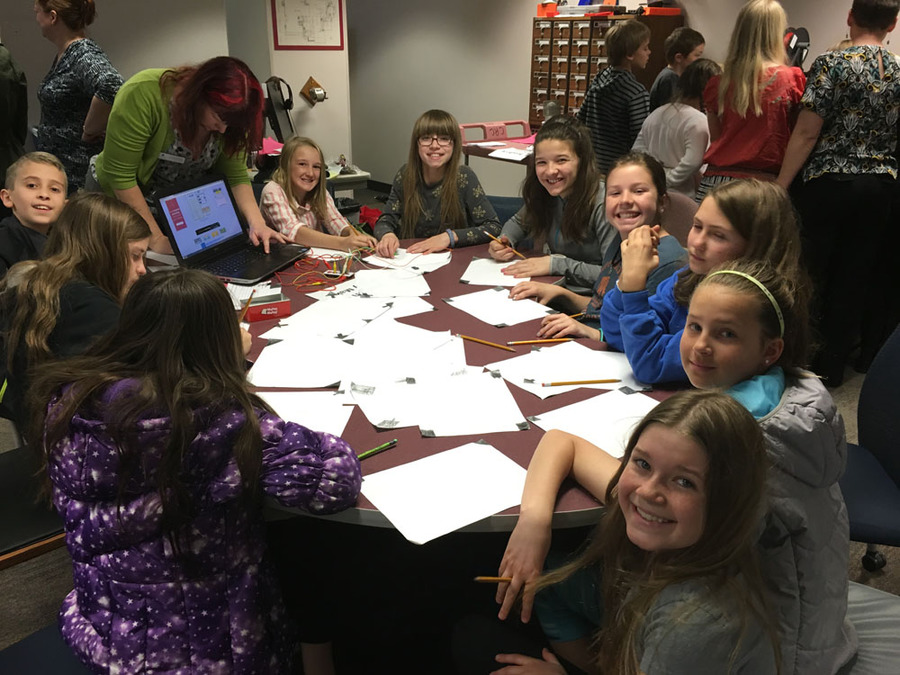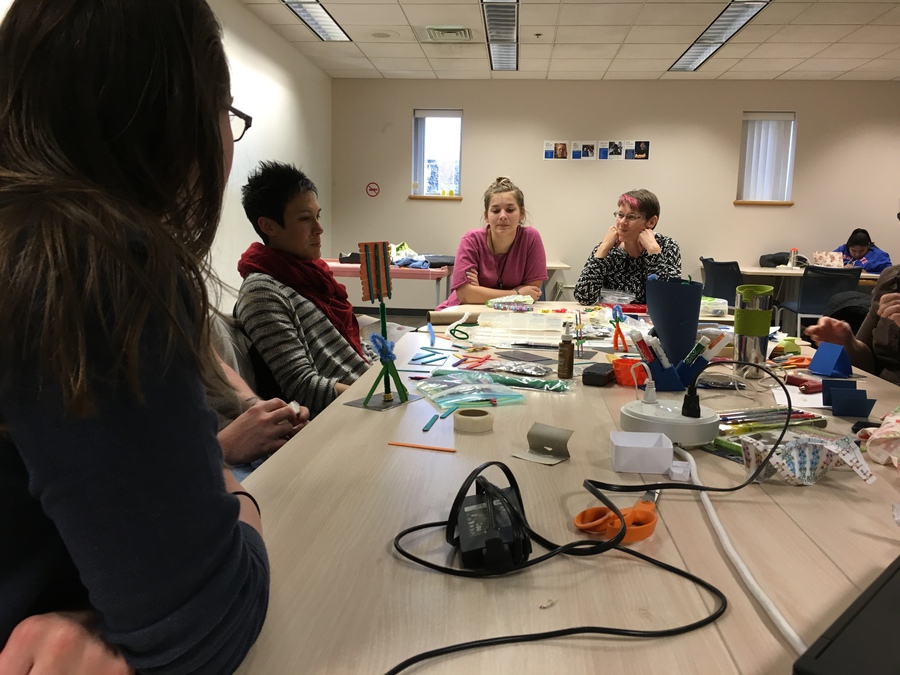Makerspace Profile
Overview
The makerspace opened after many proposals and iterations. The Gaming Interactive Media and Mobile major needed a home and as such moved into Albertsons Library. The library cleared space and built a wall separating their innovative major’s makerspace from the library’s public makerspace. The doors are often open and the entities work together on lots of projects.
The MakerLab opened inside the library next to the Gaming major labs.
The Library currently supports it.
Since opening, a student club has opened called the Creative Technologies Association. The students in this club created the culture of the space, and essentially monitor and manage the space while library employees facilitate requests, modifications, and orders of equipment.
The library now partners with groups all across campus to serve needs. Most recently the library began working with the students in the University Innovation Fellows program (UIF) from the Epicenter at Stanford. The UIF students have held design thinking workshops to help advance the maker space to acquire additional services, technologies, equipment, and other resources.
The library is a place for content creation, not content consumption. The MakerLab team endeavors to create a radically inclusive community space with a clear pipeline to resources and technical expertise. The primary function of the space is to provide an informal and safe setting that empowers students to turn their ideas into concepts fulfilling both personal projects and classroom objectives. The space also serves faculty, staff, and community members.
● A showcase of projects
● Accessible to a wide range of users
● Help students turn ideas into concepts and concepts into reality
● Provide a unique pathway for skills learning, confidence building and personal satisfaction
Access
Students, staff, and faculty at Boise State University can access the makerspace during open library hours. During the semester that is 7am - midnight, Monday - Thursday, 7am - 7pm Friday, 10am - 7pm Saturday, and 10am - midnight on Sunday.
Community members may partner with students to help them prototype, design, and implement their ideas.
The tools include: soldering station, arduino, raspberry pi, 3d printers (five total), audio and video equipment (green screen, HD cameras, lighting, software, tripods, microphones, sound booth), vinyl cutter, tables for collaboration, wireless internet, Apple TV, giant white board, MaKey MaKeys, and some hand tools (sandpaper, scissors).
The greatest resource is the community that inhabits the MakerLab. It’s a fabulous idea space where troubleshooting becomes a life skill. Students are empowered to help each other and they do so productively, efficiently, and with a great spirit of fun and personal satisfaction.
Anyone may walk into the space and get a tour from the employees or student teams that work in the space. We have become a “home away from home” for many students at Boise State, and many student organizations choose to work in the MakerLab because of the spirit of teamwork and innovation that resides there.
Tools, Materials and Resources
The main tools are the 3D printers:
1 donated MakerBot Mini
1 LulzBot Taz 5
1 LulzBot Mini
1 LulzBot Taz 5 with dual flexystruder
We provide HIPS and PLA.
The vinyl cutter is a silhouette portrait.
3 video cameras: 1 Canon Rebel, 2 Canon Vixia kits, 1 boom mic, several lav mics, several shotfun mics, tripods, SD cards, and microphone kit supplies.
Access & Usage Costs
There is no cost to anyone to use the space.
Management
The Library has two librarians, one staff member, and one student employee who help facilitate the space. The librarians are faculty. This team also manages the web site for the library. This team is very busy!
Training
Employees hold a variety of workshops. Students also hold workshops about their expertise.
We bring experts from the community in to hold workshops.
We host meetings from Open Lab Idaho - a community hackerspace and makerspace that promotes creative, technological, and educational collaboration by hackers, computer geeks, engineers, circuit benders, crafters, tinkerers, programmers, and artists.
Community members, student organizations, and the maker community hold workshops in the space regularly.
Use and Activity
Every day a core group of students fill the space working on projects at tables. Students who have never been in the space enter and the core students welcome them in, show them around, and invite them to sit with them. Several students are 3D printing, or designing their prototypes in Solid Works, and many students will be recording their videos.
When special events take place, such as open data meetings and presentations, they occupy the meeting area of the space and the students keep working. There are generally 2-3 workshops per day, often 2-3 special tours, at least once per week there are instruction sessions for students who spend time with specific emerging technologies to develop proficiency, and increasingly more school groups are doing field trips to the space to learn about emerging technologies.
There are often at least five individuals working with others with one on one coaching.
The group is diverse and inclusive. We are sometimes even discussing the idea of it becoming a safe space and how to make it more safe for our community.
The MakerLab at Boise State University Albertsons Library attempts to include non-dominant groups through a variety of practices: instructional techniques, communication styles, user empowerment, and strategic outreach.
We follow constructivist approaches in our curriculum design. We foster and enable creative team work.
We recently held a human centered design event to redesign the makerspace. Not only did we get a chance to teach human centered design - we applied it directly to the space to develop a proposal for expansion.
Culture and Community
This is the best thing I believe that we have accomplished. We have developed a strong network of individuals from all disciplines who come together and work on projects. We have seen a lot of projects succeed because of our innovative practices.
We don’t have a hierarchical structure. Anyone can be a maker. We focus on diversity and inclusion. It’s a priority to us to develop a safe space - emotionally and intellectually as well as physically.
Makerspaces are places to demystify technologies that are used by experts, or those who identify as being the expert in particular areas. Creating an environment that is open and inclusive to all is critical to a makerspace success and we embody this.
We entertain and are open to all ideas from users, and we let the users participate to redesign the services.
Challenges and Lessons Learned
Resources are limited, so we are currently partnering with other campus entities to expand access to resources, technical expertise, credit bearing options for students, expand the student base, and gain additional equipment.
Advice to other Makerspaces
Partner with people. Conduct an environmental scan and keep talking to people in those spaces with the focus on being open and collaborative. Be easy to work with.
I have a lot of advice regarding how to design an empowering and strong makerspace community. I consider the makerspace to be more about facilitation of empowerment, and much less about equipment. We consider everyone can become an expert, and we like to help non dominant groups gain proficiency with emerging technology.

-1.thumb.jpg?1464906321)
